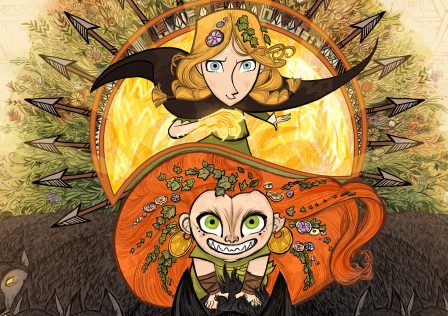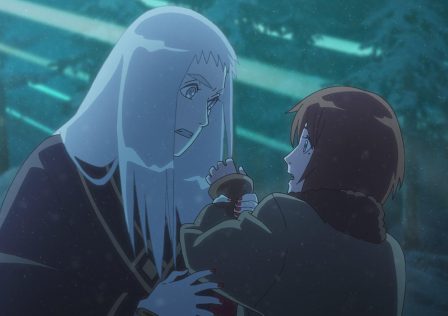At a particularly grim point in Frozen II, Anna looks pensively at Olaf and asks him to say something that will help her look on the bright side. Olaf replies, “Bright side? Um, turtles can breathe through their butts?”
He’s right; they can. But beyond just a random factoid, the line feels like a commentary on the world we live in – making it possibly the most profound thing ever uttered by my least favourite character in the Frozen franchise (I know, I have a frozen heart).
The world is backwards now. For some of us, it does spark optimism.
Through social media, the minority has a voice (even if actual rights are still up in the air) – you know things are different when marketing folks are now appeasing the LGBTQ communities. The #metoo and #timesup movement saw sleazy predators or casual sexists in the workplace, long allowed to prowl and discriminate, increasingly called out and crucified on the career ladder. A political alliance in Malaysia that had ruled for 61 years amidst kleptocracy and corruption scandals can be toppled at the polls overnight. A 16-year-old teen led one of the largest climate change protests across 150 countries this year. In the cinema hall where I watched Frozen II, little girls dressed in the iconic pale blue dress with a sparkly cape no longer worship Disney princesses – they want to be queens.
But, for others, this does not look great at all. Many among them are products of longstanding affirmation of their superiority, whether in terms of race, nationality, or gender. They were taught – or shown – that their bawdy jokes and playful gropes can be laughed off, that they can pay women less for the same job, that their born traits are better than other people’s born traits, that young girls who challenged adults “need a spanking”, and that the wheels of democracy are greased by money politics. This was how the world worked. Now, the rug is, well, not yanked from beneath them – unlike Elsa’s castle, change does not rise overnight – but slowly being tugged away.
The result is the widening chasm between those pushing for change and those resisting it, with vitriol and harassment levelled at either side filling the void between. How do we bridge them? No one seems to have a good answer yet. But I was surprised to see Frozen II venturing into the unknown.
The latest Disney animated movie is also one of the most overtly political in the slate – it nods to real-world issues about man-made environmental damages and brutalities that natives suffer in the hands of two-faced colonialists (incidentally, the movie was released close to Thanksgiving, a celebration with an origin in native massacre).
But the overarching theme of Frozen II is change – it is in the autumnal palette, songs, and Olaf’s sudden poetic outburst, “…how I wish this could last forever… yet change mocks us with her beauty.”
The sequel picks up a few years where the first movie left off. Elsa (Idina Menzel) is the sovereign ruler of Arendelle. Her younger sister, Anna (Kristen Bell), is her overprotective chaperone. The siblings, now in their 20s, are closer than ever.
But everyone knows that you can’t march into adulthood without some big shakeups, and for the royalties of Arendelle, their shakeups are bigger than most – quite literally, the entire kingdom is ‘shaken’ out of their homes by an earthquake.
The calamity seems tied to the mist-shrouded forest north of the kingdom, and a mysterious voice that only Elsa can hear. To save Arendelle, Elsa and Anna set off for the impenetrable woods to confront its secrets, with their trusty sidekicks – snowman Olaf (Josh Gad), evolved Disney prince Kristoff (Jonathan Groff), and his reindeer Sven – in tow. The trip would lead them to discover a dark past in the royal family, and stir up Elsa’s repressed uncertainty as a mythical hero.
Those expecting the dark, serious mood of the teaser trailer – let it go. I had to. I was hoping that Frozen II could leverage its indomitable status to push the envelope, much like how its predecessor had rewritten Disney’s own love-at-first-sight formula.
Instead, the journey into the furtive forest is relatively uneventful, save for some fire that reminds us why Elsa is a badass. Anna lectures her sister. Kristoff sings with his reindeer. Olaf breaks urgency with his gags. The mass displacement of the Arendellians looks more like a mild inconvenience rather than an unforeseen disaster.
For my other expectations, however, Disney delivered in avalanche. The breathtaking animation that the Powerhouse of Mouse is known for. Elsa showing off her cool powers (complete with a brief but stunning costume henshin). Songs that would make themselves at home in my brain and my Spotify playlist and my YouTube Recommended list and my brain (sorry, I’m looping).
The sum of these parts is a rather choppy film. The most interesting plot point is Elsa’s self-discovery, but it is diluted by the personal conflicts that three other characters had to resolve as well. While it is interesting that the main stars of the movie are ‘growing up’ concurrently, it also means a squeezed window of time for each to develop their journeys. The difference between a sense of urgency and a sense of hurry is stark in this breakout sequel.
Yet, I liked Frozen II. In embracing change, the film also reaches out to those resisting it – something which the rest of us progress-championing folks often forget to do.
While the narrative of breaking free from the known is carried by Elsa (who is, incidentally, the unofficial Disney queer icon), Anna is the status quo surrogate. The younger royalty’s first song ‘Some Things Never Change’ recognises that things, in fact, do change, but she will “hold on tight” to what she knows and cherishes.
In embracing change, the film also reaches out to those resisting it – something which the rest of us progress-championing folks often forget to do. Share on XAnd this is relatable. That passing time brings uncertainties is a familiar struggle for audiences of all ages, be it the Frozen franchise’s children-turned-tweens fandom, the parents they allowed to come along, or saps like me weary of Disney’s growing monopoly but still contribute to its box office dominance.
Holding on to the past is a coping mechanism for the turmoil that comes with transformation. Consider the media nostalgia cycle that is probably as constant as change. While entertainment big corps cash in on resurrected cultural phenomena from the bygone eras like Star Wars and [insert all the Disney live action remakes here], we soak in the memory of a time that was – even if just in our heads – better.
Krystine Batcho, a professor of psychology at Le Moyne College in Syracuse, New York, calls this associational memories. “It’s comforting because you’re the master of that memory,” Batcho tells Mental Floss. “You know your own lived-in past perfectly, but you have no idea what the future is going to be.”
Expressing this in poetic grace is my favourite song in Frozen II, ‘All is Found’. One half of the Frozen franchise’s songwriting power couple, Kristen Anderson-Lopez, calls the track “the roadmap of the entire musical”.
Sung by their mother as a lullaby for young Elsa and Anna, ‘All is Found’ tells of the mystical river, Ahtohallan, where Elsa would eventually visit for answers about her past: “Where the north wind meets the sea / There’s a river full of memory / Sleep, my darling, safe and sound / For in this river all is found”.
Before you narrow your gaze at the song for romanticising the past (and it is a valid skepticism for a product of Disney, the mega capitalist of nostalgia), the song went on: “In her waters, deep and true / Lie the answers and a path for you / Dive down deep into her sound / But not too far or you’ll be drowned.”
The song plainly lays out why humans carry a torch for the bygone, and a reminder that looking back is not always bad, because learning from history may illuminate the ‘answers’ and ‘path’ on our march forward. Yet pining for the past can be a rabbit hole; one that distorts senses and chokes the future. One that can drown you.
Going forward is easier said than done, of course. As Anna would discover, when the lights are going out for everything that makes up your sense of self, you simply don’t know how to keep up. What happens when your sister, someone who shared your world, now has to go beyond it because she is a different being?
Similarly, in the real world, when what was once fixed certainties — gender, workplace hierarchies, sexual orientation — are now fluid and even upended, how do you cope? When jokes and behaviours that were once okay are now considered harassment, what is the alternative? When people whom you once considered outsiders are now taking your jobs and ‘invading’ your popular media, what can you do?
For many, the answer is retaliation. Psychologists have long recognised that a ‘psychological immune system’ kicks in within humans when they sense a threat to their worldview, behaviours or personal worth. Basically, it means the initial reaction is usually defensive in nature, even “alter the meaning of the event in a way that shields people from the conclusion that their beliefs or actions were misguided.”
But Anna finds a better route. Overwhelmed by the grief and fear in a life gone unrecognisable, her song ‘The Next Right Thing’ says it all: “Take a step, step again / It is all that I can to do / The next right thing”. The ballad, which some also laud as an anthem for mental illness, lays bare the difficulty of moving in tandem with changes, but every small step forward in the right direction counts.
Speaking to Vanity Fair, Lopez says, “The world has changed. You can’t keep it from changing, and truth is getting lost. How do we find truth, and how do we find it through these two strong women?”
You do the next right thing.
Also published on Medium.

writes about pop culture with the suspicion that it is actually writing her.



